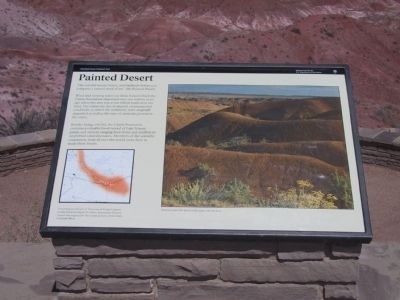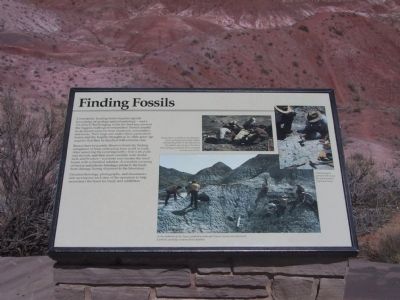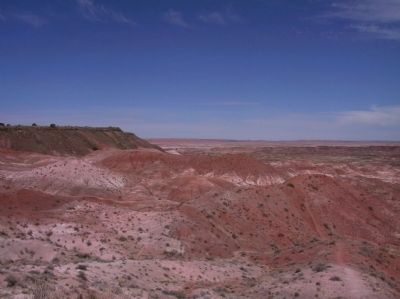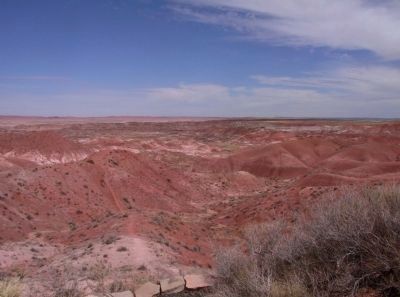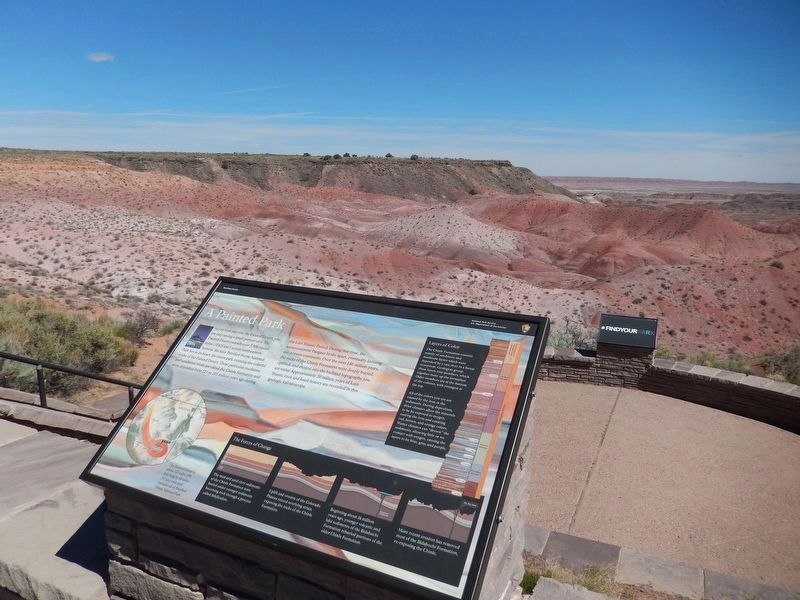Near Chambers in Apache County, Arizona — The American Mountains (Southwest)
Painted Desert / Finding Fossils
Wind and running water cut these features from the Chinle Formation deposited over 200 million years ago when this area was a vast inland basin near sea level. The colors are due to ancient environmental conditions in which the sediments were originally deposited as well as the type of minerals present in the rocks.
Besides being colorful, the Chinle Formation contains a valuable fossil record of Late Triassic plants and animals ranging from ferns and shellfish to amphibians and dinosaurs. Members of the scientific community from all over the world come here to study fossils.
Captions:
Extending in a broad arc from the east of Grand Canyon southeastward towards St. Johns, Arizona, the Painted Desert was exposed by the erosional force of the Little Colorado River.
Minerals paint the desert with many colorful hues.
Finding Fossils
Consistently locating fossils requires special knowledge of geology and paleontology--and a bit of luck! But bringing home the find may present the biggest challenge to researchers. Fossils usually lie in the remote areas far from museums, universities, and roads. Their large size makes them particularly heavy, and the fragility brought on by their great age requires that they be handled with extreme care.
Researchers frequently discover fossils by finding a fragment of bone protruding from a cliff or bank. After removing the covering earth--first with picks and shovels, and then more carefully with dental tools and brushes--scientists may harden the fossil bones with a chemical solution. A complete covering of burlap and plaster bandages protects the fossil from damage during shipment to the laboratory.
Detailed drawings, photographs, and documentation accompany each step of the operation to help reconstruct the fossil for study and exhibition.
Captions:
Researchers carefully encase dinosaur bones in burlap and plaster before transporting them to the laboratory. The plaster cast protects the bones from damage and keeps them arranged as they were found.
As the badlands of the Tepees gradually erode and Triassic fossils are uncovered, scientists carefully excavate fossil deposits.
Paleontologists gently brush away the soil around a phytosaur bone.
Topics. This historical marker is listed in these topic lists: Natural Features • Paleontology.
Location. This marker has been replaced by another marker nearby. It was located near 35° 4.33′ N, 109° 46.816′ W. Marker was near Chambers, Arizona, in Apache County. Marker was on Park Road, on the right when traveling west. Marker is located in the first vista turn-out from the National Park Visitor Center. Touch for map. Marker was in this post office area: Chambers AZ 86502, United States of America. Touch for directions.
Other nearby markers. At least 8 other markers are within 2 miles of this location, measured as the crow flies. A Painted Park (a few steps from this marker); Painted Desert Community Complex Historic District (approx. 0.3 miles away); Over the Edge (approx. 0.6 miles away); A Gap in the Geologic Record (approx. 0.8 miles away); Painted Desert Inn (approx. 0.9 miles away); Badlands (approx. one mile away); Early Explorers (approx. one mile away); Desert Vistas (approx. 1.4 miles away).
Credits. This page was last revised on December 25, 2020. It was originally submitted on April 9, 2014, by Michael Kindig of Elk Grove, California. This page has been viewed 961 times since then and 42 times this year. Photos: 1, 2, 3, 4. submitted on April 9, 2014, by Michael Kindig of Elk Grove, California. 5. submitted on December 25, 2020, by Cosmos Mariner of Cape Canaveral, Florida. • Bill Pfingsten was the editor who published this page.
